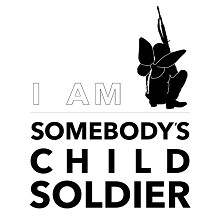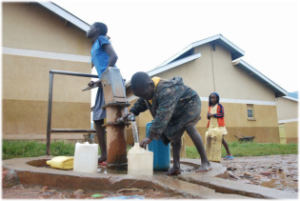New Blog Series: Uganda, the country that saw children become soldiers (part 1)
New website means new blog series!
At I am Somebody’s Child Soldier (IamSCS), a lot of new and exciting things are happening! 2017 is a great year for us as we launch our new website and our two main projects: the Women Returnees campaign and the Laroo ADRA campaign. Both of the projects that we present on the charity website are not only helping those in need, but are also assisting IamSCS to make the required changes and to take action to reach the international Sustainable Development Goals (SDGs) that all charities, institutions and governments are working towards.
Indeed, as many of you know, the year 2016 has welcomed the new SDGs. Although initiatives to meet these seventeen goals will be applied by organisations in each country of the world, one area needs to achieve them urgently by 2030: Sub-Saharan Africa. The plight occurring in this region is so high that it has caught our interest; issues such as high degrees of poverty, inequality, and a huge lack of infrastructures in education and health services are common. Another problem which occurs in different Sub-Saharan African countries, such as the Central African Republic, the Democratic Republic of the Congo, Somalia, Sudan and Uganda, is that of child soldiers where children are exploited by rebels and governments. As a newly formed charity, we’ve always wanted to help former child soldiers and victims of war in the aforementioned countries and this remains our goal in the long term. At the moment, we are focusing our action on one country, Uganda, and in order to take action to combat post-war problems, we first needed to create a framework of analysis of the situation there. We would like to share with you our understanding of the country. Let’s begin this blog series by introducing you to the geography of Uganda.
Uganda is located in East Africa with a geographical area of approximately 236,040 square kilometers. This region faces a key challenge: a lack of water. In the case of Uganda, 8.4 million people (21%) lacked access to safe water and 31.5 million (79%) lacked access to improved sanitation facilities in 2015. Furthermore, in urban areas, more people are using improved sanitation facilities (29%) than in rural areas (17%). Due to this unsafe water and poor sanitation, 4,000 children die every year from diarrhoea.
Now, imagine a former child soldiers who already suffers from post-war trauma and cannot access safe water and improved sanitation facilities. The consequences could be disastrous. On the contrary, if we provide these individuals with psychological treatment, safe water and improved sanitation facilities, there are many benefits: children are healthier, they pay more attention at and are more willing to attend school as they don’t need to miss lessons to collect water. Thus, it is crucial to satisfy fully the demand so that water is always available when and where children and adults need it.
Climate change
Due to the dual phenomena of El Niño, which began in 2015, and La Niña, Uganda – along with many areas of East Africa – experienced a drought in 2016. Moreover, the expansion of charcoal production due to a rapid rate of urbanisation and agricultural expansion into forest land have accelerated deforestation in Uganda.
As a result, the country faces decreases in food production and food security. Therefore, one of the major challenges for Uganda is to find tools to match the double challenge of climate change mitigation and adaptation.
To react appropriately to these issues and to protect the environment, a charity like IamSCS needs to find ways to provide children with the kind of food that is available and nutritious while making sure that our support is delivered on the ground on a sustainable basis by women returnees who are implementing environmentally-friendly businesses. With the goal of improving their lives and livelihoods, our charity could also promote the use of off-grid solar power systems for the beneficiaries’ project and the school that we are supporting.
You’re making a difference
At IamSCS, we do recognise women’s contribution to the economy and the role that they can play if further empowered. We also believe that everyone and, especially, every child who was forced to fight should have access to a bright future. This could happen if we provide victims of war with projects that allow them to have sustainable livelihoods while protecting our environment.
IamSCS relies on voluntary donations to support our vital work for those targeted by conflict. Your support enables us to reach some much needed survivors. As the SDGs required, we do need to take actions so that no one is left behind.
Sources:
https://www.wssinfo.org/documents/?tx_displaycontroller%5Bregion%5D=&tx_displaycontroller%5Bsearch_word%5D=uganda&tx_displaycontroller%5Btype%5D=country_files
http://reliefweb.int/report/kenya/east-africa-drought-situation-report-no-1-february-21-2017
http://www.fao.org/docrep/004/AC427E/AC427E06.htm



